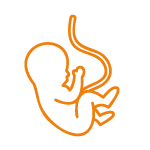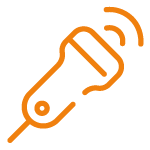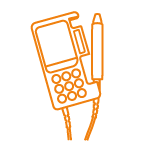Drainage after implantation and in the department
If you are caring for a patient directly after the implantation of a tunneled indwelling catheter or if a patient with an indwelling catheter has been re-hospitalized, we have summarized some information here for your quick orientation. Depending on the medical prescription, the effusion should be drained intermittently or the indwelling catheter is permanently connected to a closed drainage system.
Performing the first drainage immediately after implantation
Connection of the indwelling catheter directly after implantation with a Pneu-Pack I
Indications are:
- For initial, temporary drainage directly after implantation, for outpatients and inpatients until hospital discharge
- For drainage of large drainage volumes at intervals
- For temporary permanent drainage in the event of incision leaks
- For passive drainage of air and/or pleural effusion in the event of an air fistula or pneumothorax
Implementation of temporary drainage directly after implantation and during the inpatient stay
If you are caring for a patient directly after the implantation of a tunneled indwelling catheter or if a patient with an indwelling catheter has been re-hospitalized, we have summarized some information here for your quick orientation. Depending on the medical prescription, the effusion should be drained intermittently or the indwelling catheter is permanently connected to a closed drainage system.







